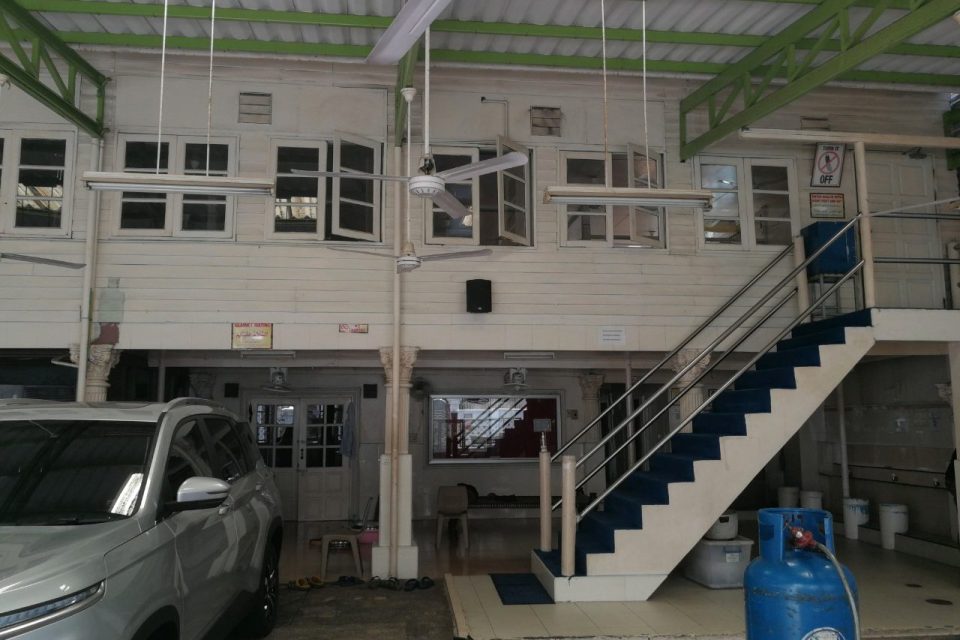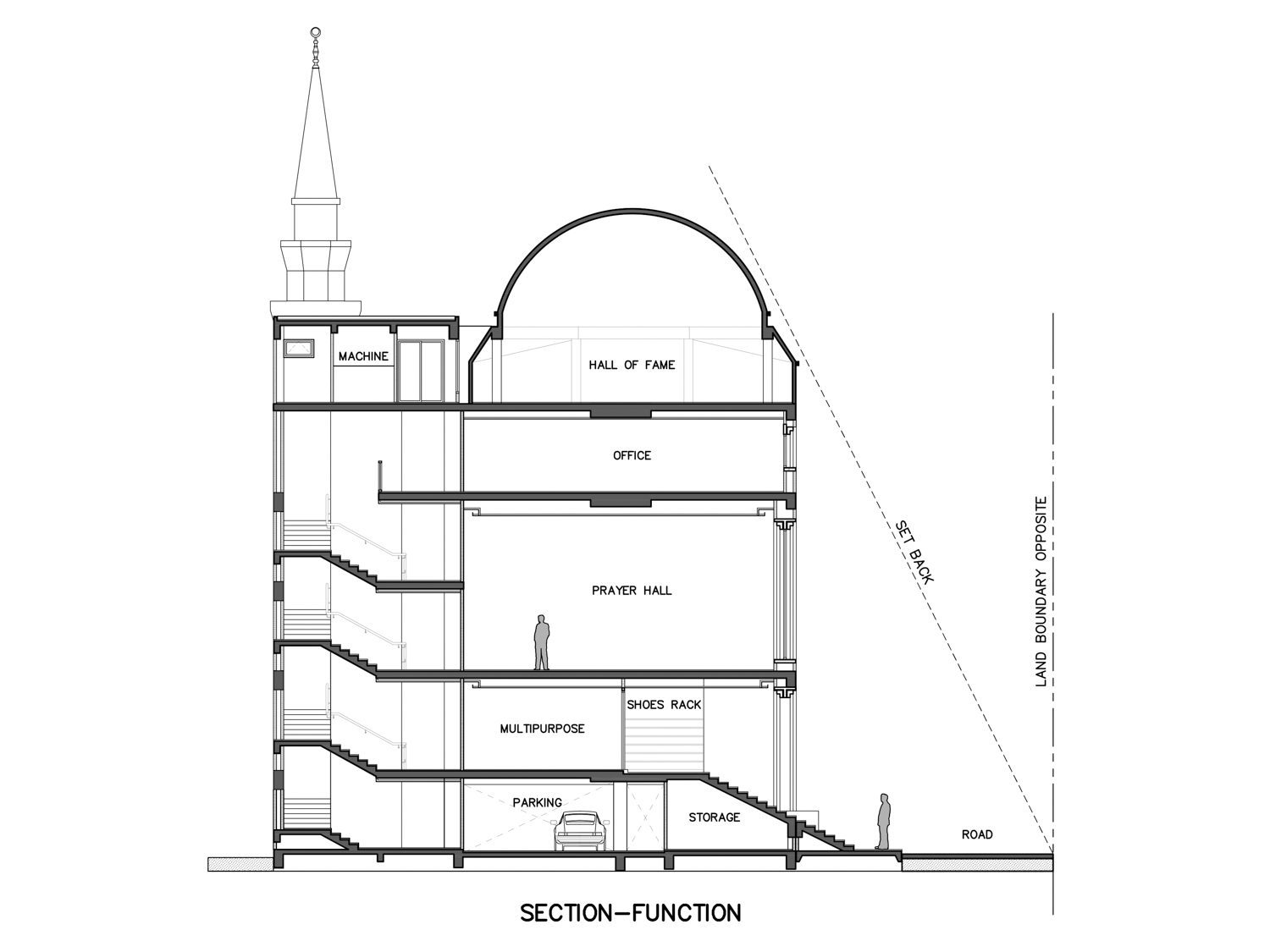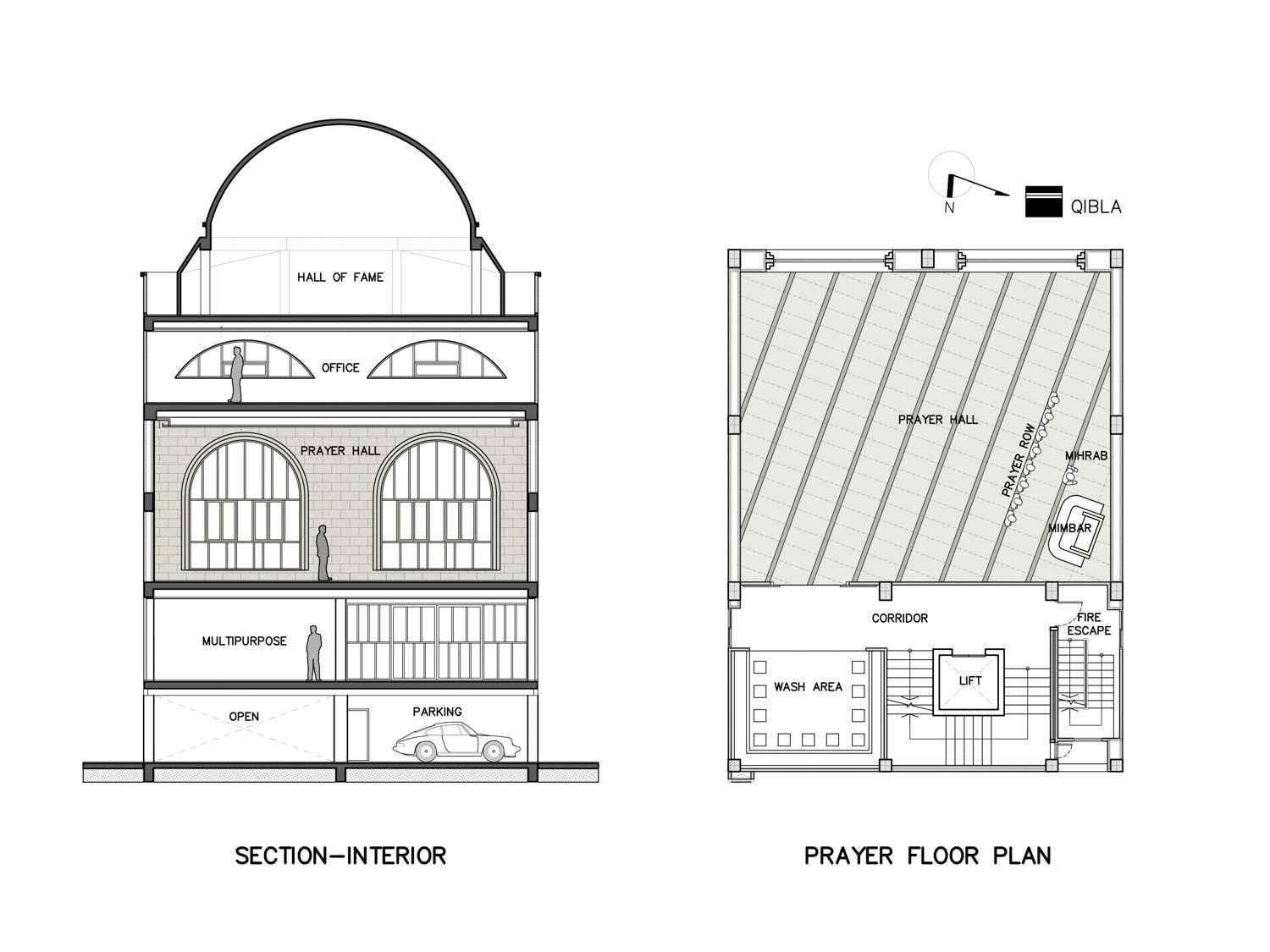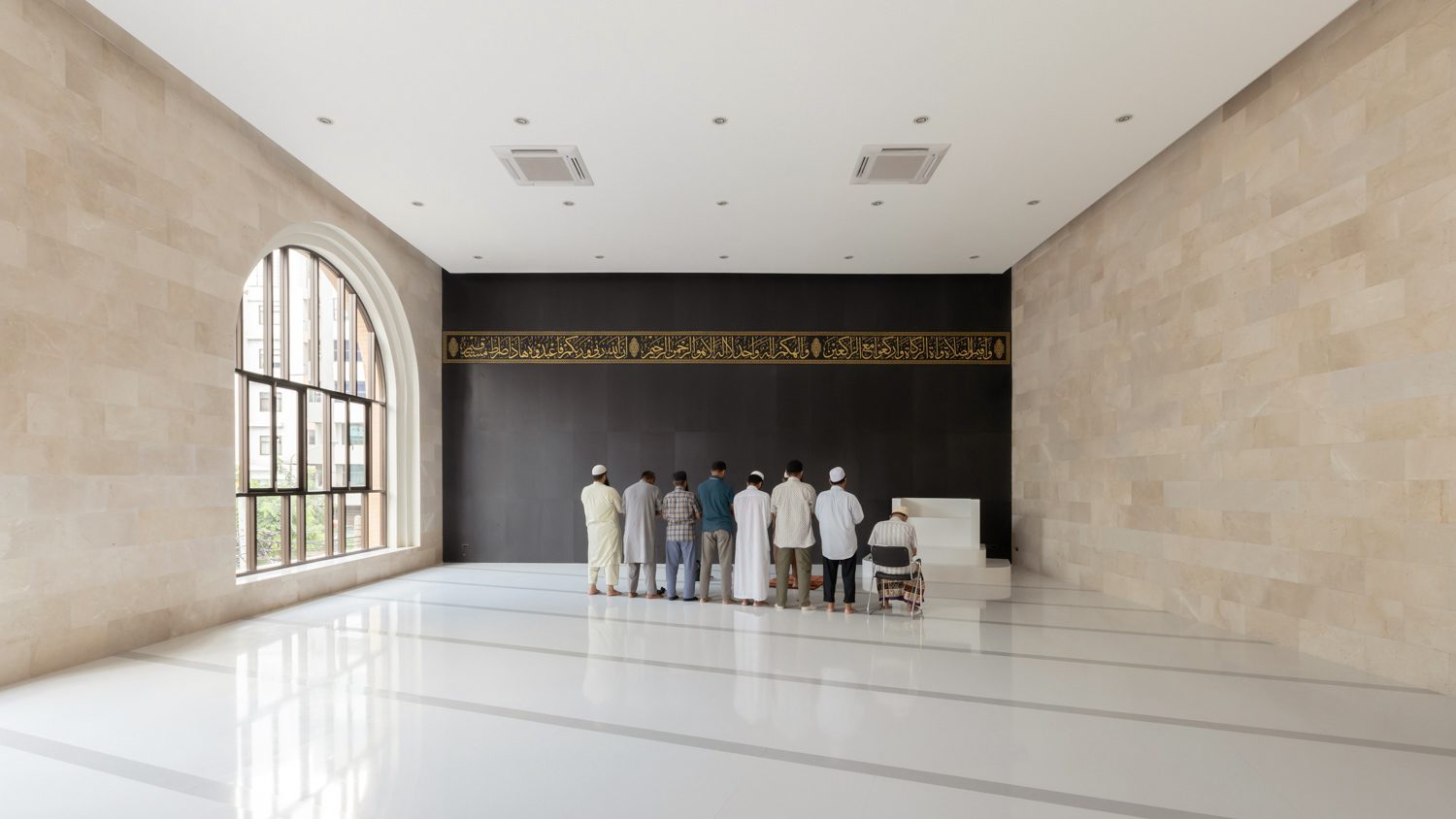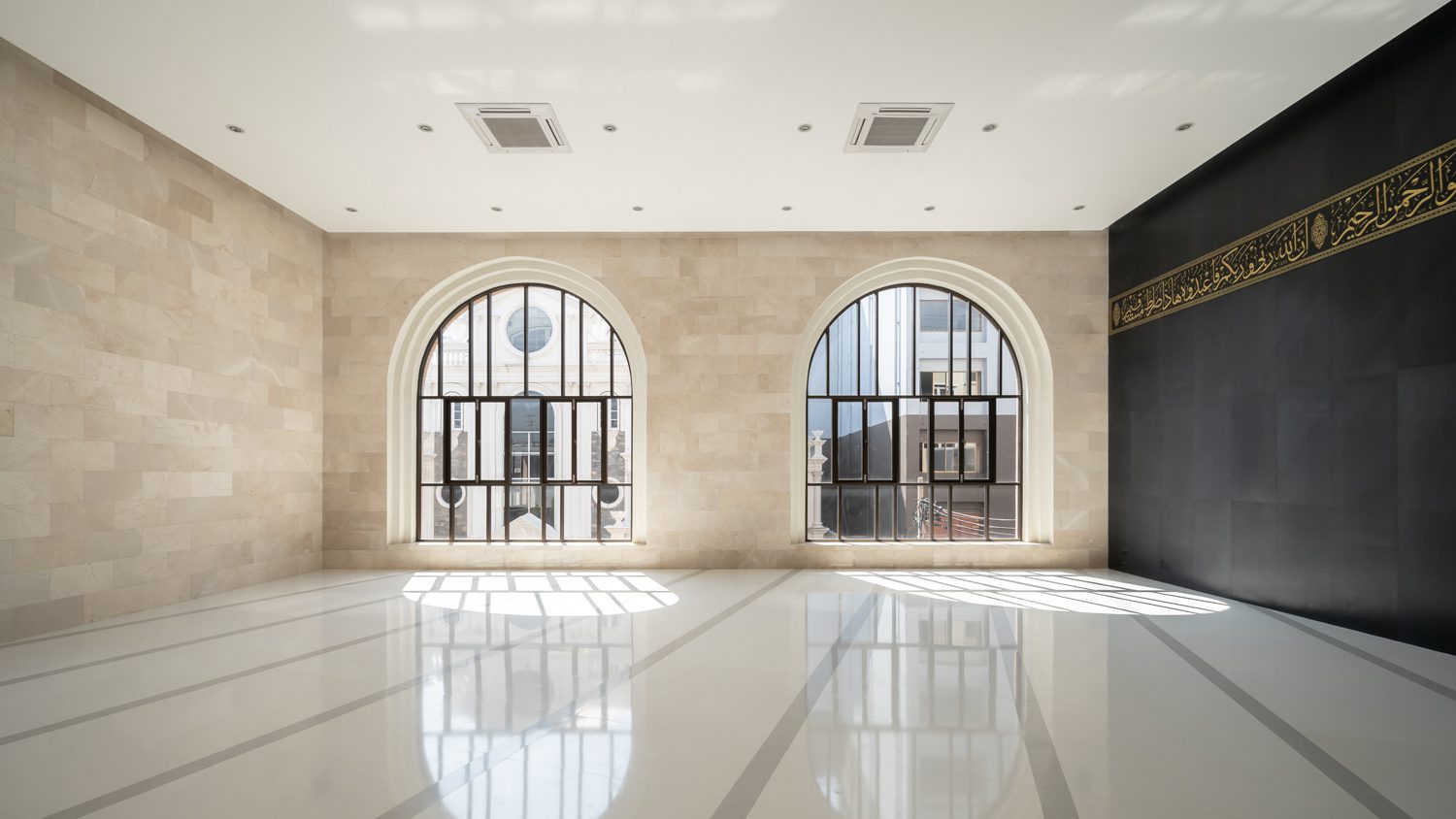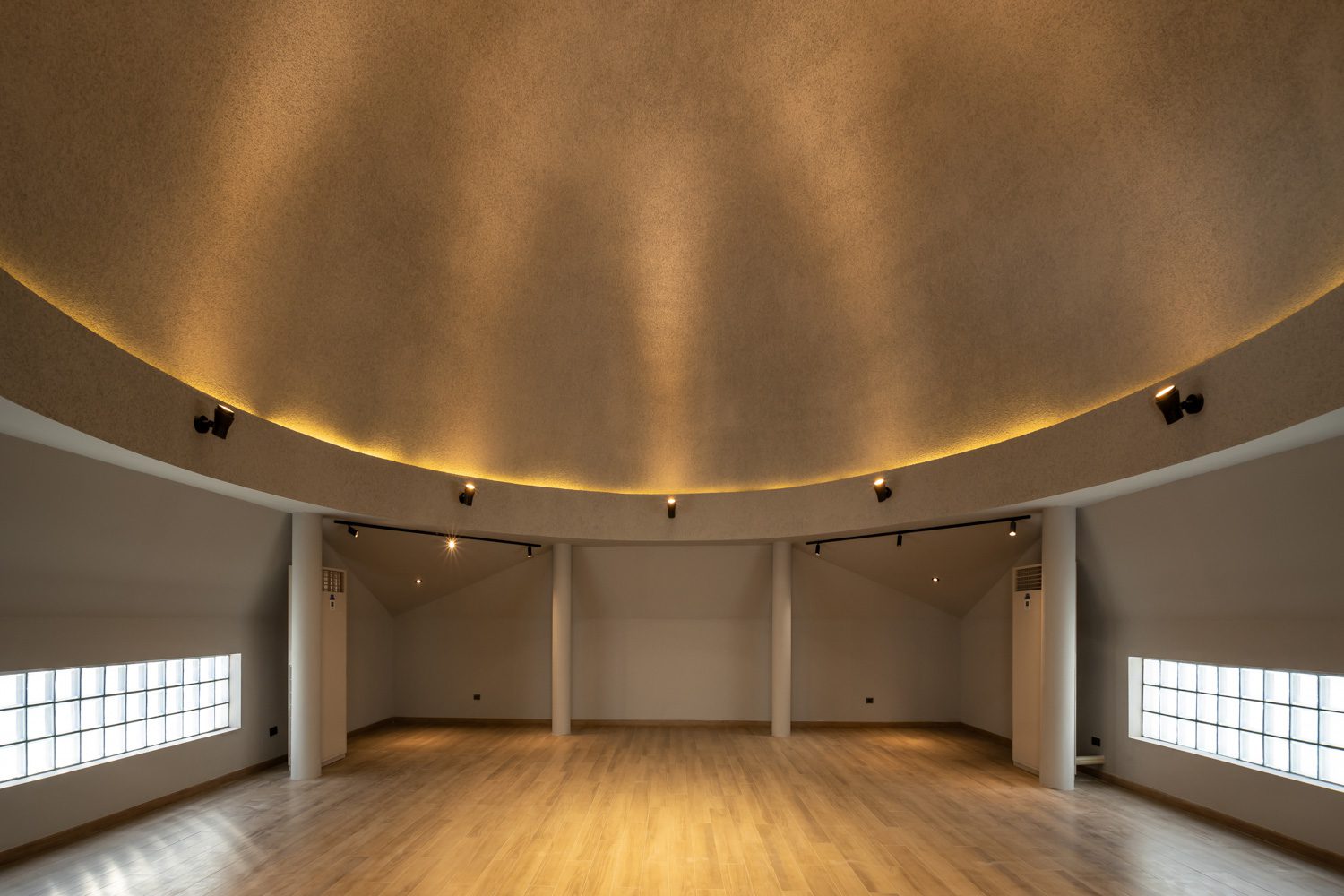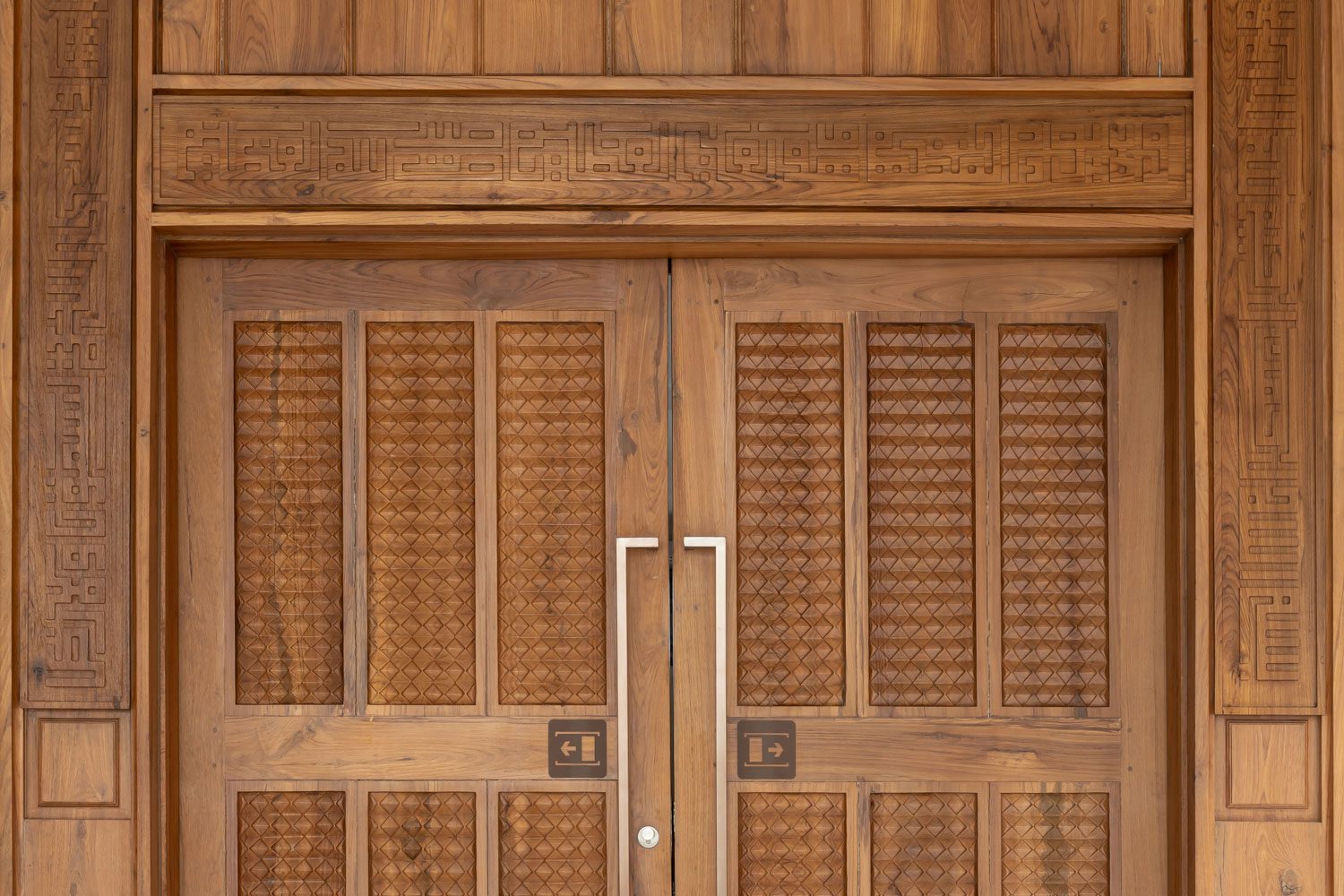‘THAI-PAKISTAN FRIENDSHIP MOSQUE’ BY TEECHALIT ARCHITECT IS A 5-STORY BUILDING THAT PROVIDES A MINIMALIST LOOK WHILE STILL ENCAPSULATING THE CHARACTERISTICS OF ISLAMIC ARCHITECTURE
TEXT: KITA THAPANAPHANNITIKUK
PHOTO: KETSIREE WONGWAN EXCEPT AS NOTED
(For Thai, press here)
As this article is written from the perspective of a Thai Buddhist, the term ‘mosque’ evokes imagery of a dome-shaped, semicircular structure with intricate geometric designs. It also brings to mind smaller towers embellished with mosaic tiles, showcasing magnificent and detailed patterns. While it is true that not all mosques have a similar appearance, I seldom encounter structures that exhibit such a distinctively different design.
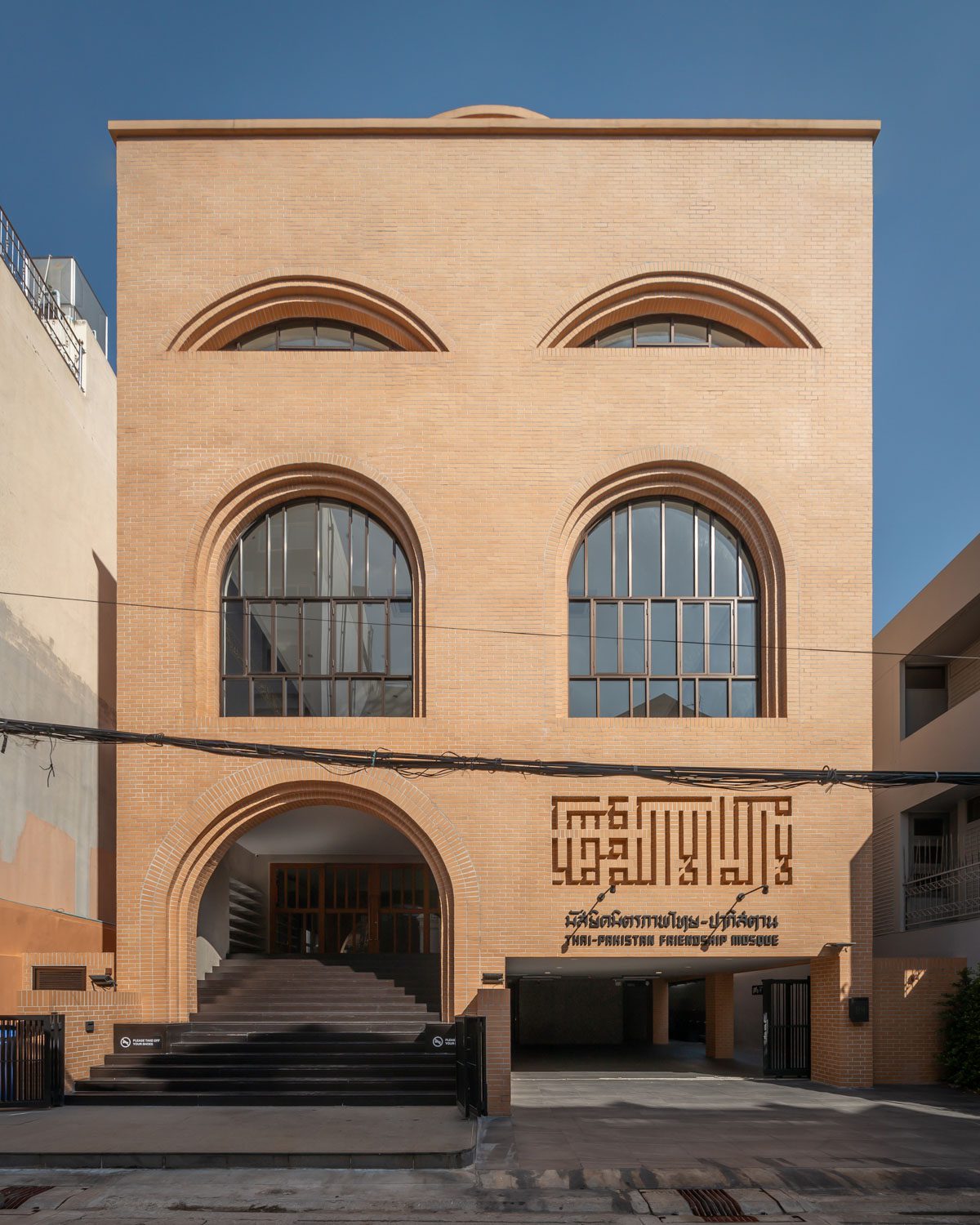
There is, however, a mosque in Bangkok that stands out from the norm for two primary reasons. Firstly, it is a five-story structure. Secondly, it deviates from typical mosque architecture by adopting a minimalist aesthetic and prioritizing the creation of high-quality functional spaces rather than intricate ornamental details.
One late afternoon, I had the opportunity to visit the Thai-Pakistan Friendship Mosque, located on Mahaseth Road in the Si Phraya subdistrict, one of Bangkok’s bustling commercial areas. Designed by Teechalit Architect, the building offers a unique interpretation of Islamic architecture, incorporating distinct forms and spaces while still preserving its religious identity and purpose. While such characteristics may be more commonly found in places outside of Thailand, it was certainly surprising to see them here. And it wasn’t just a case of Islamic architecture. Compared to other religions, Thai-Buddhist temples rarely incorporate contemporary aesthetics into their designs. I’m not implying that it’s a negative thing, considering how universality, in the context of architecture, is frequently, if not always, linked to the West.

Before my conversation with the architect who designed this mosque, I took a moment to envision what the ‘House of God’ would look like in a world that is more diverse than ever before.
The sixty-year-old building created by and for the Pashtuns people of Bangkok
The origins of this mosque can be traced back 60 years, to a time when the number of mosques in Thailand was still quite limited. The Patan descendants, or Pashtuns, in Bangkok, along with their Muslim ancestors, joined forces to raise funds for the construction of a new mosque. This initiative aimed to provide the local Pashtun community with a suitable place for their daily prayers. The effort resulted in the establishment of the Thai-Pakistan Friendship Mosque, which remains the sole Pakistani mosque in Bangkok to this day.
The Thai-Pakistan Friendship Mosque was initially constructed as a single-story wooden building. After a span of twenty years, the first renovation took place. The extension was designed as a two-story structure, with half of it made of wood and the other half made of concrete. This combination was chosen to enhance its durability and provide ample space for accommodating a larger number of visitors. By 2019, the building had begun to deteriorate significantly, reaching a state of devastation that rendered it beyond repair. The Pashtuns community in Bangkok made the decision to demolish the old building and replace it with a brand new mosque, and the architect, Teechalit Chularat of Teechalit Architect, has been selected to oversee the project.
A mosque on 400-square-meter land: Escaping the box
In general, the new mosque was built to be the simplest in terms of structure, spatial allocation, and orientation in order to make the best use of the 400-square-meter parcel of land on which it is built. The design was realized as a five-story box-shaped structure. The building’s axis (elevator shaft and stairs) is located in the back, with a properly divided interior functional program comprising the service area and parking space on the first floor, the multifunctional hall on the second floor, and the main prayer chamber on the third floor. The Thai-Pakistan Friendship Association’s headquarters occupies the fourth floor of the building, while the fifth and highest floor is just beneath the dome roof and houses a small hall of fame and museum space that welcomes outside visitors.
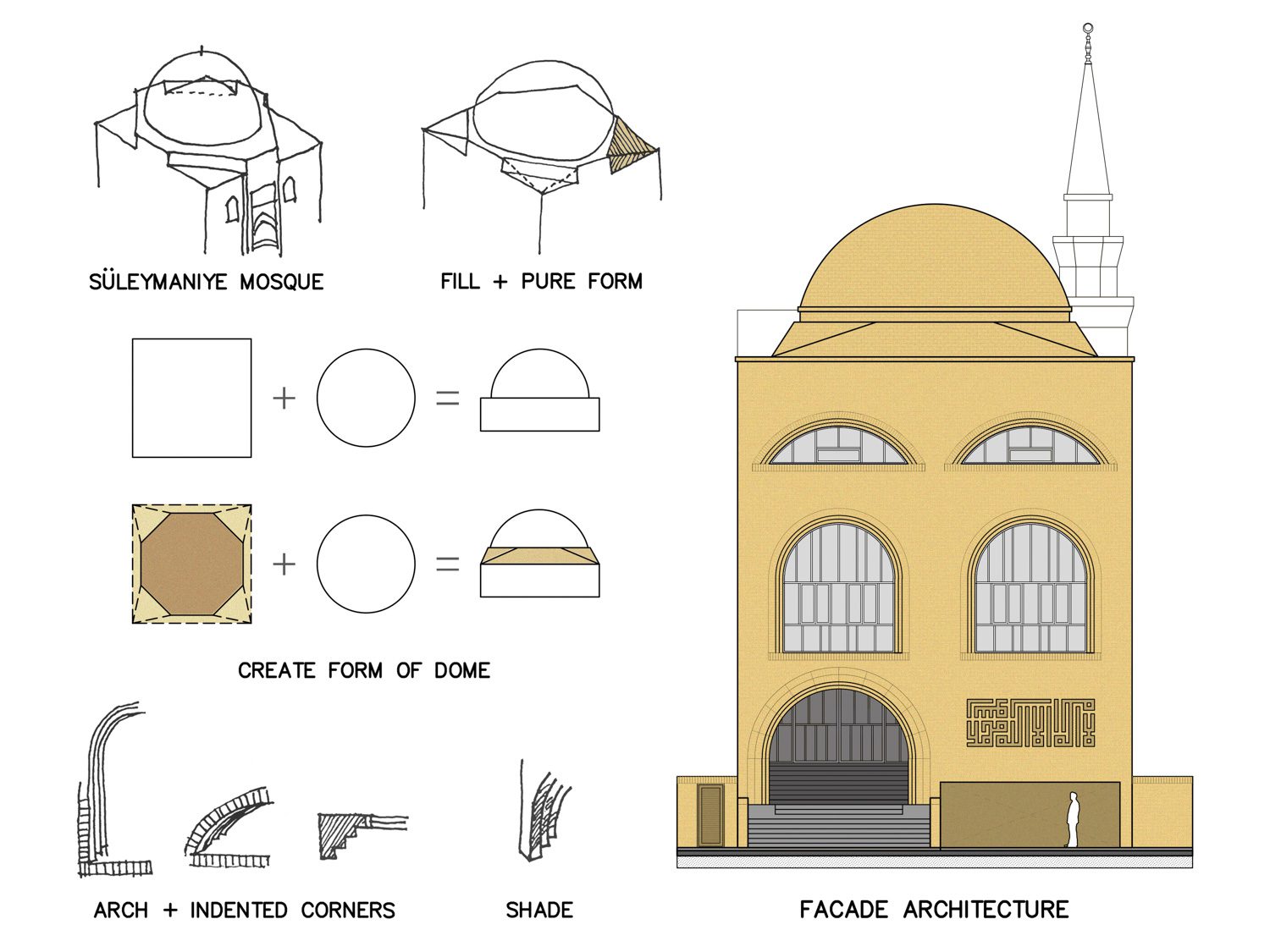
After the functional spaces were agreed upon, the architect’s next challenge was to figure out ‘how to make this box-shaped building less confined while still encapsulating the characteristics of Islamic architecture and Pakistani vernacular identity.’ Most importantly, the design must be able to accommodate Islamic religious activities and ceremonies (the structure was required to have one or more domes as a symbolic representation of the vault of heaven, all while taking into account the architect’s intention for the structure to incorporate minimalistic elements).
To resolve the confinement of the spaces inside a very thick, boxy building, the architect locates the openings and windows on every story to free the space up for sunlight and ventilation. The first-floor setback range is designed into an expansive stairway near the front of the building. The stairs not only accentuate the entrance area but also make the entire interior of the building appear larger due to the huge transition space that continues further into the interior functional spaces. Meanwhile, the inside-out perspective creates a picture frame, allowing users to observe their outside surroundings.
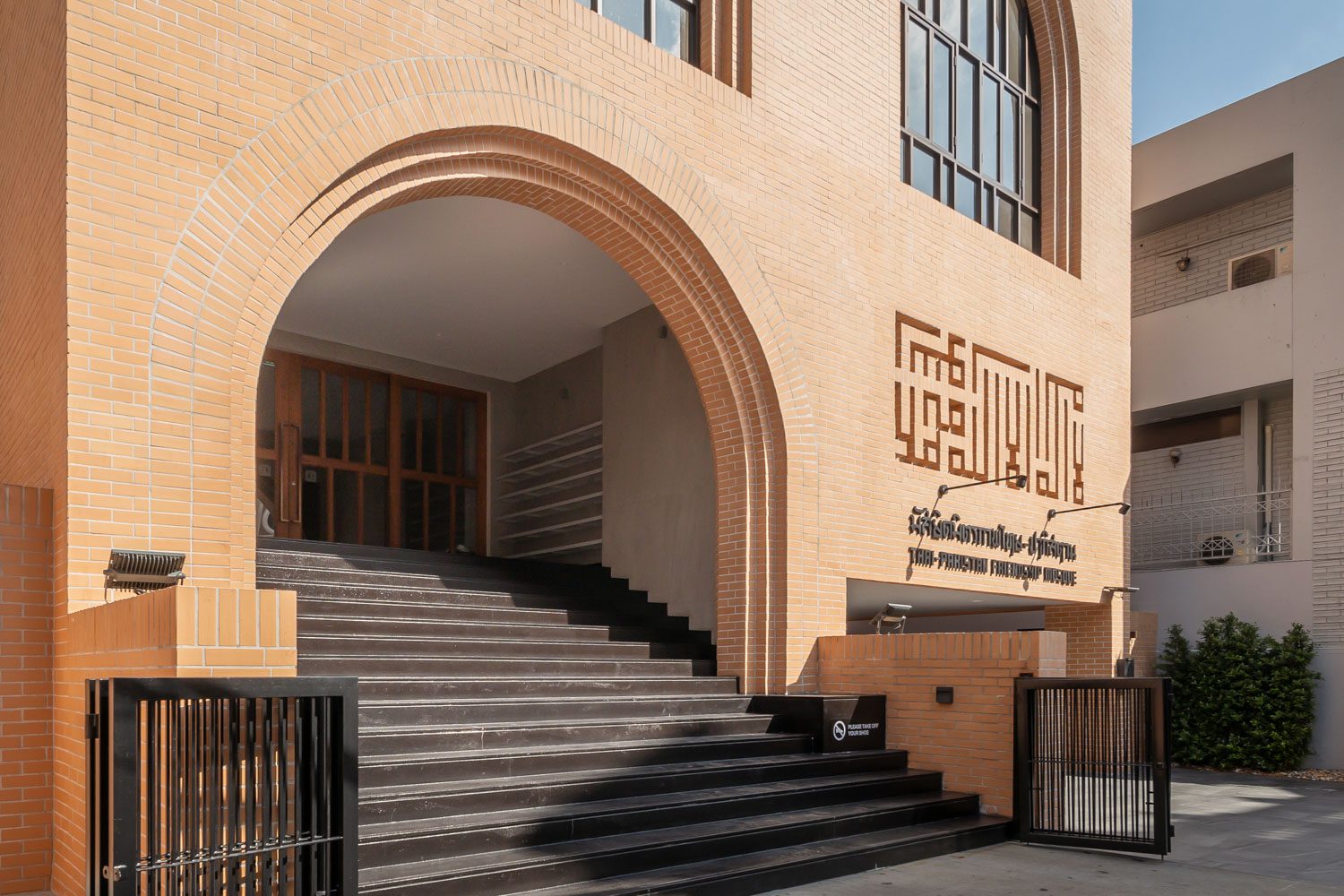
The vernacular identity of Pakistani architecture is represented by the orange bricks that are frequently used as the main component in the country’s historical Mughal architecture. The recess features of window and door frames, as well as the outside walls of the structure, render the dimension that minimizes the building’s substantial mass while enhancing the dynamic effects of light and shadow.
The most challenging element of the design is its practical use, which must be in conjunction with Islam’s sacred ‘directions’. The ‘Mihrab’ (a chamber in a mosque where the imam leads the prayer) of most mosques must face Qibla (the direction towards the Kaaba in the Sacred Mosque in Mecca, Saudi Arabia). The challenges with the praying area were that, due to the deviation of the entire building layout within the given piece of land, a huge number of functional areas would have to be sacrificed. Other axes, such as the ‘Saf’ (Muslim prayer row), which uses the spaces on the second and third floors with wood and marble-patterned tiles, need to follow the sacred direction. The tiles are laid perpendicular to the Qibla, resulting in a somewhat deviated floor, even though the design still allows the space to be entirely functional for religious activities.
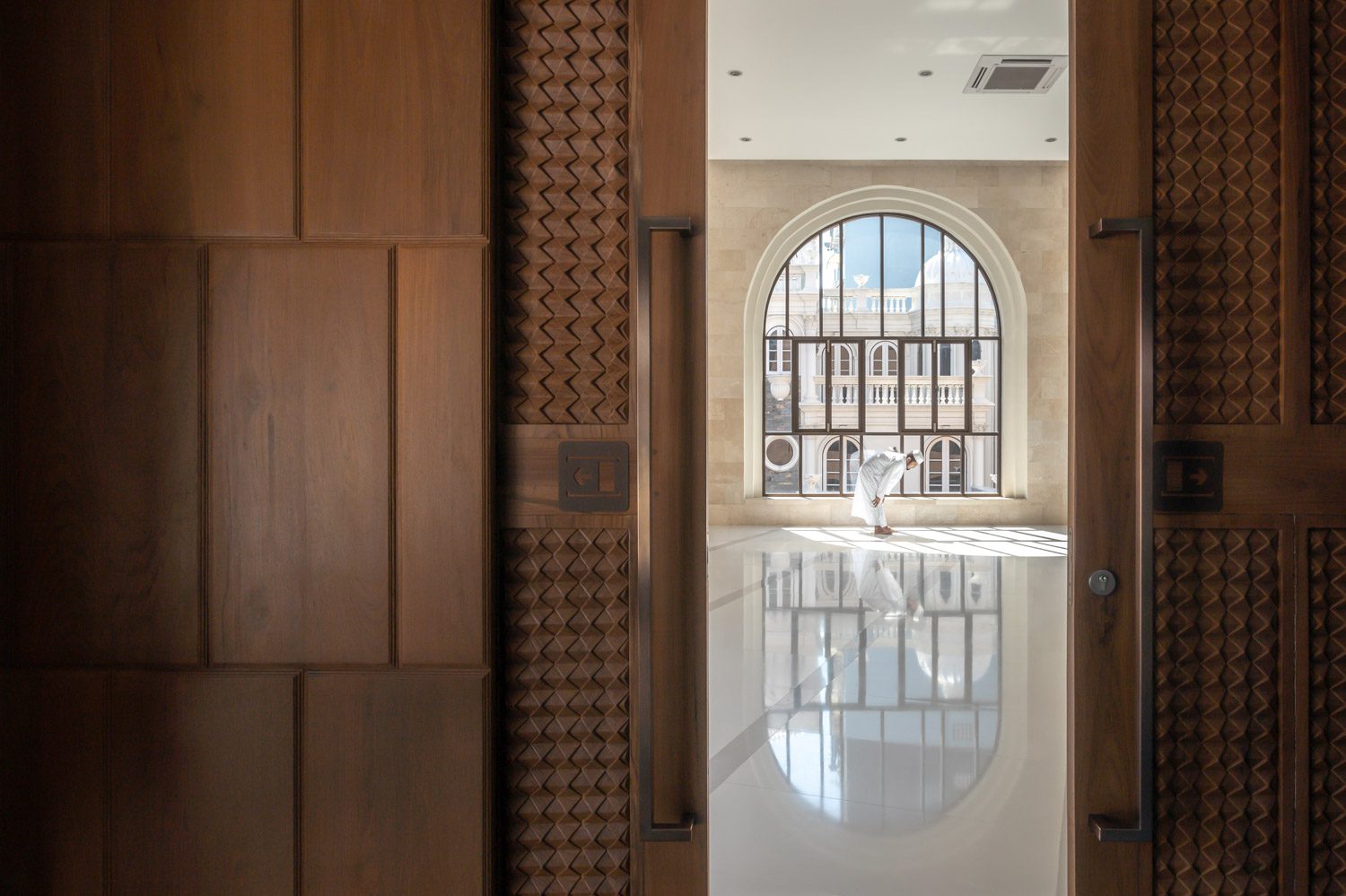
The use of various flooring materials every 1.2 meters on the second and third floors (the embedded metal borders used with the wooden tiles or the use of marble-pattern tiles in contrasting tones) helps guide and organize the prayer rows. The large prayer hall, which is the building’s main functional space, is placed on the third floor. The area with an almost 5.0-meter-high floor height has its own major role, which is to accommodate the large crowd that comes to the mosque for Friday prayers. The floor is distinguished by a Qibla-facing wall coated in matte black granite stone. The non-reflective surface contrasts wonderfully with the bright hue of the marble stone that covers the rest of the surface, providing a focal point that will allow prayers to be more serene and peaceful.
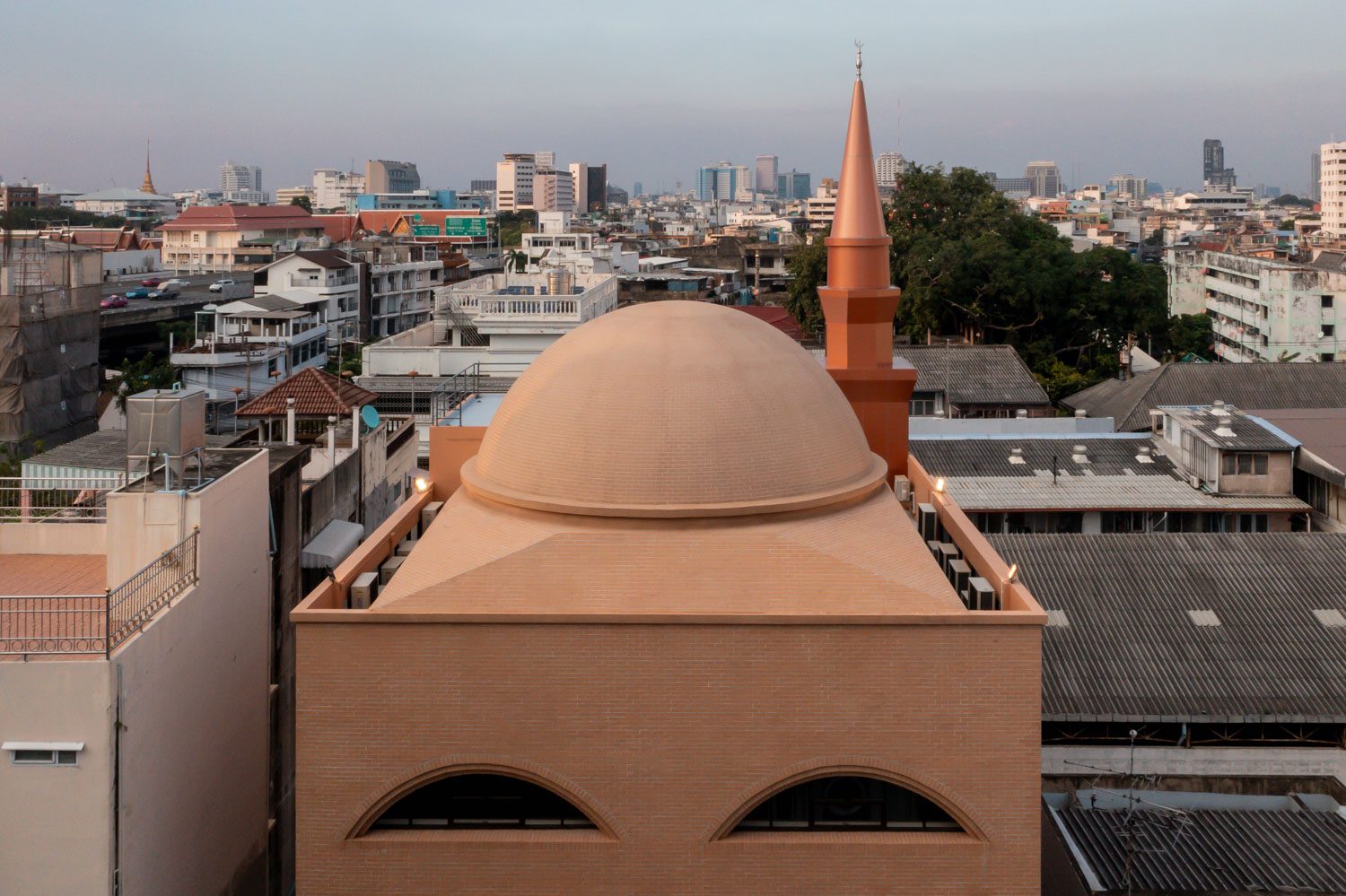
Islamic architectural elements are incorporated into the structure via minimally designed arches in the window and entryway. According to Teechalit, the dome that crowns the building in the fifth-story area is the result of the challenging task of finding the proper shape for the dome that would exactly fit on the rectangular base. The architect did some study and discovered the Suleiman Mosque in Istanbul, which has a rectangular foundation with recessed corners that form an octagonal structure that ascends to the dome crown. Teechalit adapted such features for the design of this mosque. On the same floor, the architect includes the Azan tower (the tower is used to project the Muslim call to prayer), designed as a steel structure wrapped in aluminum composite. The tower completes the mosque’s architecture and allows the public to recognize the edifice as Islamic architecture even from a distance.
At a closer look, the Thai-Pakistan Friendship Mosque is filled with various minimalistic details, such as the clean, simplistic white Mimbar, the meticulously arranged bricks forming the Kufic script written in verses from the Quran on the front of the building, and the arch teak wood frame. The door, on the other hand, is ornamented with a geometric pattern rather than vines and flowers, indicative of the architect’s passion for minimalist architecture.
Minimalist Architecture: Diminishing Otherness
“I designed this mosque by taking into account the context of the Bangrak neighborhood. This area is known for its multiculturalism, which contributes to its unique identity and character. My focus was on delivering a minimal and simple design rather than adhering to the conventional aesthetics of Islamic architecture, ensuring that the building would not stand out too much from its surrounding community,” Teechalit explained.
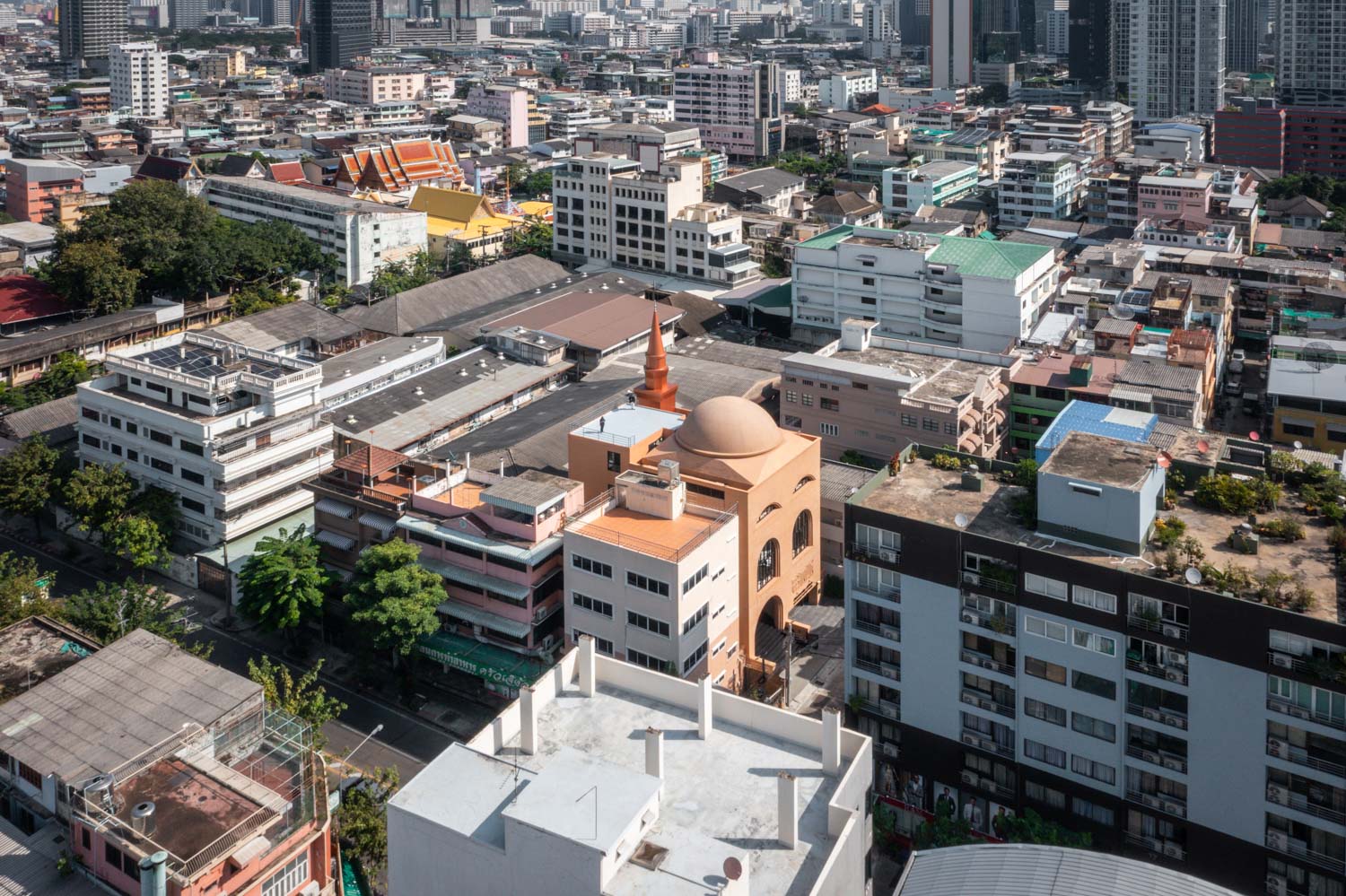
Bangrak is a neighborhood in Bangkok with remarkable religious diversity. This is evident from the presence of mosques, temples, and churches scattered throughout the area, making it a truly multicultural and inclusive community. The design was therefore created to harmonize with the social context of its surroundings. In addition to the architect’s personal interest, the completion of geometric forms and the minimalist aesthetics they provide contribute to the creation of a sense of ‘universality’ that reduces the building’s otherness. The identity of Islamic and Pakistani architecture continues to serve as a visible embodiment of the area’s subcultures, specifically ethnicity and religion. However, it is important to acknowledge that architecture is inherently public and accessible (at the very least, its existence is something that anyone can see).

During our conversation, Teechalit explained to me that a mosque is considered to be the house of God, where people of all backgrounds are welcome. In addition to welcoming Patan Muslims, this mosque has also embraced members of the Islamic faith from various regions, such as Africa, Bangladesh, India, and Myanmar. What truly confirms this inclusivity is the architect’s intention to design the architecture in a way that is both community-friendly and respectful of the diverse cultural and religious context of the neighborhood. The architectural aesthetics prioritize integration and harmony with the community rather than standing out as something distinct or foreign.
Opening a new door: architectural professions in the realm of the Islamic faith
The building not only represents an imaginative departure from conventional religious architecture, but the entire project has also expanded the possibilities for architectural design in the realm of the Islamic faith and opened new doors for the architectural profession in a broader sense than ever before.

Islamic Center of Thailand designed by Paichit Pongpunluk
Teechalit shared with us that he was greatly inspired to pursue a career in architecture during his time in middle school. This inspiration struck him when he had the opportunity to perform his daily prayer at the Islamic Center of Thailand. The center’s building is notable for its unique and modern thin-shell structure. When he was given the task of designing a mosque, he recognized an opportunity to create something unique. When asked about the inspiration behind the distinctive appearance of the mosque, Teehcalit expressed the hope that there might be children who, like him, feel inspired and motivated by what he has created and want to contribute something valuable to the community in the future.
The experience he gained from his visit to the Islamic Center of Thailand greatly influenced the architect’s vision for the Thai-Pakistan Friendship Mosque. I can’t help but wonder what the mosques designed by the architects of the later generation will look like.
The Journey of Faith: Becoming a Part of Multiculturalism
Before we parted ways, Teechalit expressed his hopes that, despite the fact that this is a religious site, it will become a landmark, not only for followers of the Islamic faith to come and pray but also for interested individuals from Muslim travelers, both Thai and foreign, or groups of visitors who are interested in the architecture of the mosque.

The Thai-Pakistan Friendship Mosque is more than just a representation of a new interpretation of what a place of worship can be due to the universality of its architecture and the way the physical structure is virtually seamlessly incorporated into the cultural fabric of the community. On the one hand, the mosque still exemplifies the diversity that has unwittingly become a part of our lives. From the standpoint of the Islamic faith, culture and faith span thousands of years, from the very beginning of the religion until now, from a distant land like Saudi Arabia to Thailand. The long journey, like sediments in a river, has brought together people from all walks of life, in different bodies, and from many races and cultures. They congregate in this one physical space where cultures collide in the ‘House of God,’ coexisting in the midst of numerous houses and lives with tales waiting to be explored and discovered.
Peace be upon you / Assalamualaikum




